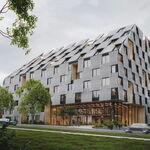Goldie
Senior Member
Thanks, r937. That's the fun part of this hobby.
Good grief; as a bit of a police car buff I'd forgotten about those two door sedans.
(quote from Bomber Command museum website http://www.bombercommandmuseum.caThe first British-built D.H. 82 Tiger Moth for Canadian use was assembled at Downsview, Ontario in the summer of 1935. The Tiger Moth was an obvious replacement for the DH 60 Moth that was in air force service at the time, but the RCAF was in a state of hold and was without a budget. In May 1936, Phillip Garratt, a First World War pilot, became General Manager of de Havilland Canada. Garratt designed an all Canadian version of the Tiger Moth incorporating the RCAF's requested changes to the original design. These included an enclosed cockpit suitable for winter flying, heavier axles that could accept skis, a padded instrument panel and other refinements. Tigers incorporating these design changes were designated DH 82C to distinguish them from their 'A' model English cousins. In early 1937, Garratt finally won a long sought after order from the RCAF for 26 Tiger Moth trainers. A condition of the sale was that the Tiger Moths would be manufactured, not just assembled, at Downsview. Eventually 1747 Canadian Tiger Moths were built by de Havilland and these aircraft equipped many Elementary Flying Schools throughout the country. RCAF Tiger Moths flew an impressive 1,778,348 flying hours during the war and equipped more than 20 flying schools.
I agree
And I wouldn't see why not, using them here is near identical
"House for Dr. G. R. McDonagh, 329 Church Street, south of Gerrard. One of E. J. Lennox's finest residential designs, built in 1888, demolished in 1970."
QUOTE: Thecharioteer.
My newly acquired Official TELEPHONE DIRECTORY TORONTO AND SUBURBS - December 1906:
(THE BELL TELEPHONE COMPANY OF CANADA, LIMITED.)
McDonagh, Dr G R. - Surgeon.
140 Carlton Street.
Telephone No: North 1320.
Regards,
J T




